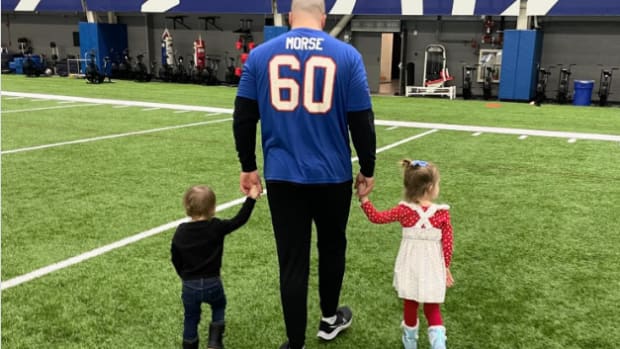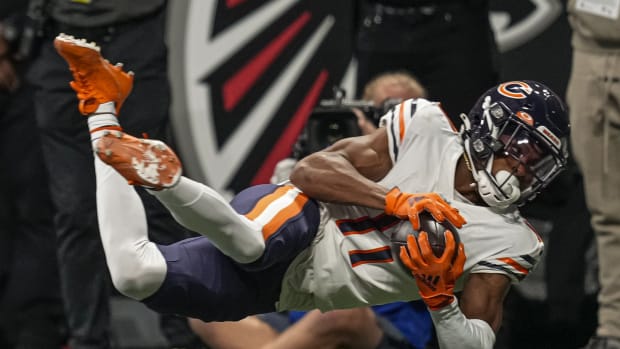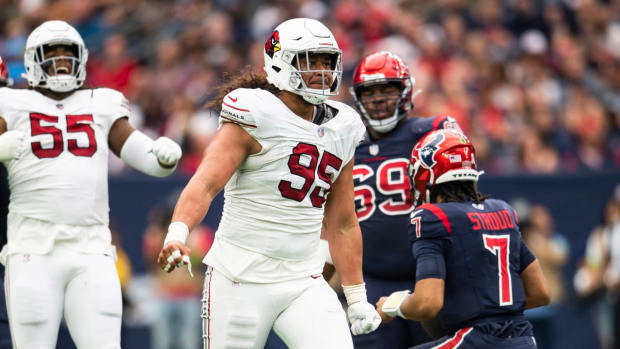
Excitement abounds for future of NFL, but dark clouds still loom
Inside the 32 NFL locker rooms this time of year, almost every club feels like it's got a chance to be at least decent. That speaks to the competitive balance that is a hallmark of the league. While fans and the media are speculating on the most compelling storylines of 2009 -- Brett Favre's impact in Minnesota, Michael Vick's role in Philadelphia, and Tom Brady's return in New England -- the people who run pro football are already hard at work charting the course of the game well into the future.
Here's what you can look forward to:
On the field, as the game continues to evolve, we'll continue seeing more shotgun formations (the percentage increased from less than 7 percent in 1995 to 15.9 percent in 2005, then doubled again over the next three seasons, to 32.7 percent -- nearly one-third of all snaps -- in 2008) and fewer pure huddles (the number of plays run without a huddle has quadrupled, to four percent, in the past five seasons, and figures to continue to rise this year).
Some people have dismissed the outbreak of Wildcat alignments as a fad, but with the prevalence of spread offenses in the college game -- and hybrid gamebreakers like Percy Harvin of the Vikings coming to the pros -- the Wildcat and its variants will be with us for a while. The logical next step has already arrived: running threats who can also pass, like Michael Vick of the Eagles and Pat White of the Dolphins.
Considering it's the most popular sport in America, pro football has remained largely opaque. Our game simply has more secrets. Game plans are secret, of course, as are the individual plays called by the offense and defense. But what sets football apart is that even after the fact, the vital details of the game -- the coaches' game films that are essential to understanding why a play did or didn't work -- remain closely guarded.
It wasn't always this way. Back in 1946, during the first season of the Cleveland Browns, Paul Brown invited the beat writers from the Cleveland papers into his office the day after each game. They would sit in the dark with him and watch the coaches' tape at his side, as he would explain and dissect every play.
I'm not suggesting Bill Belichick is going to be inviting the Boston Globe beat writer to sit in on his Monday film review anytime soon. But I am saying that access to game film (which is, of course, by now digital video) is one of the last frontiers in the education of the football fan.
You mention such an idea to football people, and they immediately clam up. We don't need all the extra criticism, they protest. But this doesn't make sense. People will criticize anyway. Wouldn't it be better if they had more information? Bringing fans deeper into the game is the next logical step, and it's even more logical because it could be a moneymaker.
Football fans thirst for access, in all things. This helps explain the continuing popularity of the HBO annual series Hard Knocks (this year shot in Cincinnati), and the miking of players for weekly features like Inside the NFL. It's why serious fans are following not just the fortunes of their teams but the Twitter accounts of their favorite players. It's also the key to the rise of the best of the fan-authored team blogs, which don't merely provide a forum for smack talk, but increasingly provide an in-depth, fine-grained detail on each and every one of a team's personnel moves.
In the coming years look for more teams to generate the inside information themselves. Take a look at one of the most legendary soccer franchises, the Liverpool Football Club in the English Premier League. For about $65 a year, the team's "e-season ticket" provides Internet access to exclusive content, interviews with players and coaching staff, and full highlights and replays of every game.
Beyond that, you can be sure the league is measuring how to best monetize the growth industry of fantasy football. Imagine a small charge for access to a video package full of isolation shots on each of your players: every carry and pass reception by Michael Turner, for instance, or every pass thrown to Larry Fitzgerald. This would allow serious fantasy players to gain a better understanding of how their players are being used. This seems obsessive, of course, but that's the nature of the game.
Also on the way: 3-D technology will within a few years make its debut on HD game telecasts. The NFL is clearly intrigued with this idea, and experimented with it in a theater setting last year. But the economics of the technology dictate that it won't take off until it becomes widely available for home viewers (at least another few years off). Before Mark Sanchez's career is over, New York fans will be able to watch him lead the Jets in hi-def 3-D from the comfort of their homes.
Added access can even be seen in stadium design. At the new Cowboys Stadium, players take the field by passing through a club in the midst of the team's field-level suites. After the game, the same club affords a view -- through a floor-to-ceiling window -- into the team's interview room, so suiteholders can eat their grilled chicken while watching players and coaches getting grilled by the media.
The biggest changes, of course, will come in structure. The league is already working out the details of an 18-game regular season (you can be sure it was discussed when the NFL sat down with NBC to extend the network's Sunday Night Football contract through 2013), which will likely come about in 2011 or 2012. The 18-game schedule has the obvious appeal that it would allow the NFL to command more money from fans and networks, and move two of the loathed preseason games to the regular season.
There are problems, though. One is that there simply isn't a competitive reason to extend the regular season, which is already a marathon at 16 games. Secondly, football people -- almost to a man -- vehemently oppose expanding the regular season. One assistant coach, whose defense was decimated by injuries last year, told me, "I can't even imagine two more games."
But they're coming, because owners need to expand the game. The two extra weeks would slot well into the calendar, pushing the league championship games into the February sweeps period, and placing the Super Bowl on Presidents' Day weekend. The de facto civic holiday of Super Sunday would be followed by a true national holiday, a day of recovery from Super Bowl parties.
Put these pieces together -- more access to teams through the Internet and other platforms, more 'premium' media streaming on multiple platforms to prime subscribers, more transparency and access across the board, more regular-season games and a growing presence overseas -- and you have the makings of a lucrative, growing National Football League.
Unless...
All of the above is moot if there's a work stoppage. What's truly scary to many football people, myself included, is that both sides are already digging in for 2011, virtually conceding that there will be no deal by March 1. That would mean no salary cap in the 2010 season, sending both players and owners into uncharted territory. Both sides sound confident about what would happen in a capless year, but neither is truly sure of the implications.
So enjoy Favre and Vick and Brady, and the torrid competition in both conferences. It's a glorious time for the NFL, and this is shaping up as a truly special season. But there are dark clouds ahead. In the best case, the league and the players association will reach an agreement, and the game can continue to grow for decades to come. In the worst case, we could be standing on the brink of an extremely combative period, and, conceivably, about to see the last year of football as we know it.





































